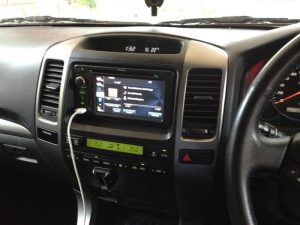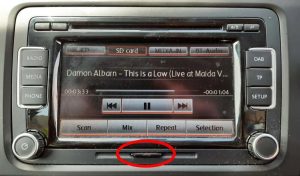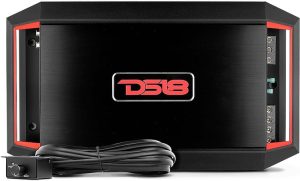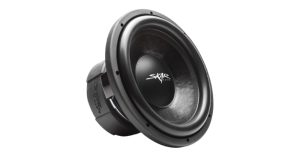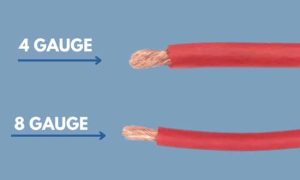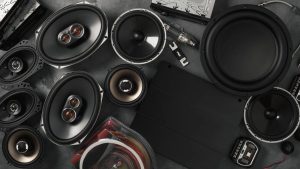A subwoofer delivers the heart-pounding bass that transforms your car audio experience. Yet, without a properly sealed subwoofer box, even the best subwoofer falls short. Sealing a subwoofer enclosure maximizes sound quality, boosts performance, and ensures every beat hits with precision. This guide dives into why sealing matters, how to do it right, and tips to elevate your audio game. Whether you’re a car audio newbie or a seasoned enthusiast, mastering this process unlocks the full potential of your subwoofer system.
Contents
- Why Sealing a Subwoofer Box Matters
- Benefits of a Sealed Subwoofer Enclosure
- Materials for Sealing a Subwoofer Box
- Step-by-Step Guide to Sealing a Subwoofer Box
- Common Mistakes to Avoid
- Enhancing Subwoofer Performance After Sealing
- Sealed vs. Ported Subwoofer Boxes
- Maintenance Tips for a Sealed Subwoofer Box
- Why DIY Sealing Saves Money and Boosts Quality
- Troubleshooting Common Subwoofer Box Issues
- Elevate Your Car Audio Experience
Why Sealing a Subwoofer Box Matters
A sealed subwoofer box creates an airtight environment for the speaker. This design controls air movement, allowing the subwoofer to produce deep, accurate bass. Without a proper seal, air leaks disrupt the pressure inside the enclosure, leading to weak or distorted sound. Think of it like a drum: a tight skin delivers a crisp beat, while a loose one sounds flat.
Sealing also protects the subwoofer from dust and debris, extending its lifespan. A well-sealed box prevents rattling noises, ensuring clean audio output. For car audio systems, where road vibrations and external noise compete, a sealed enclosure keeps the bass tight and punchy. This setup shines for music genres like hip-hop, EDM, or rock, where precise low frequencies make all the difference.
Benefits of a Sealed Subwoofer Enclosure
Sealed boxes offer distinct advantages over ported or vented designs. First, they deliver tighter, more controlled bass. The enclosed air acts like a spring, resisting the subwoofer’s cone movement for cleaner sound. This makes sealed boxes ideal for listeners who prioritize accuracy over sheer volume.
Second, sealed enclosures are compact. They fit easily in smaller vehicles without sacrificing sound quality. Their simpler design also makes them easier to build or install, saving time and effort. Plus, sealed boxes handle power efficiently, reducing strain on your amplifier.
Finally, a sealed box provides consistent performance across various frequencies. Unlike ported boxes, which emphasize specific bass notes, sealed enclosures produce balanced lows. This versatility suits diverse music tastes, from classical to rap.
Materials for Sealing a Subwoofer Box
Choosing the right materials ensures a durable, airtight seal. Start with high-quality medium-density fiberboard (MDF) for the box itself. MDF resists warping and absorbs vibrations, creating a sturdy foundation. Avoid plywood, as it splits easily and compromises the seal.
For sealing joints, use silicone caulk or liquid nails. Silicone remains flexible, accommodating slight expansions from temperature changes in a car. Liquid nails offer a permanent bond for rigid connections. Apply either with a caulk gun for precision.
Weatherstripping or foam gaskets seal the subwoofer’s mounting area. These materials compress when the subwoofer is screwed in, blocking air leaks. For extra protection, add acoustic foam inside the box to dampen internal vibrations and enhance sound clarity.
Screws, wood glue, and clamps round out your toolkit. Use coarse-thread screws for MDF to ensure a tight grip. Wood glue strengthens joints, while clamps hold pieces in place as the glue dries. With these materials, you’re ready to build a box that maximizes bass output.
Step-by-Step Guide to Sealing a Subwoofer Box
Building and sealing a subwoofer box requires patience and attention to detail. Follow these steps to create an enclosure that delivers booming bass.
1. Design the Box
Calculate the box dimensions based on your subwoofer’s specifications. Most manufacturers provide recommended enclosure sizes in the manual. For sealed boxes, aim for a volume that balances compactness and performance—typically 0.5 to 2 cubic feet for a 10- or 12-inch subwoofer. Use online calculators or software like WinISD to fine-tune the design. Cut MDF panels precisely, ensuring all edges align perfectly.
2. Assemble the Box
Dry-fit the panels to check for gaps. Apply wood glue to each joint, then secure with screws every 4-6 inches. Wipe away excess glue immediately to avoid a messy finish. Use clamps to hold the box together as the glue sets, ideally for 24 hours. This step ensures a solid structure before sealing.
3. Seal the Joints
Apply a generous bead of silicone caulk or liquid nails along all interior seams. Smooth the caulk with a finger or tool for a clean finish. Pay special attention to corners, where leaks often occur. Let the sealant cure fully—usually 24-48 hours—before proceeding. A proper seal prevents air from escaping, preserving bass quality.
4. Install Weatherstripping
Place foam gaskets or weatherstripping around the subwoofer’s mounting hole. This creates an airtight seal when the subwoofer is attached. Ensure the material is thick enough to compress slightly under pressure but not so bulky that it interferes with mounting.
5. Add Acoustic Foam
Line the interior with acoustic foam or polyfill to reduce internal sound reflections. This step minimizes standing waves, which cause uneven bass. Don’t overstuff the box, as excessive filling can alter the enclosure’s effective volume and dampen performance.
6. Mount the Subwoofer
Secure the subwoofer to the box using screws and the weatherstripping. Tighten screws evenly to avoid warping the frame. Double-check that no air escapes around the mounting area. A snug fit ensures optimal pressure inside the enclosure.
7. Test the Seal
Play a bass-heavy track and listen for hissing or rattling. Place your hand near the seams to feel for air leaks. If you detect issues, apply additional caulk or tighten screws. A properly sealed box produces clean, distortion-free bass.
Common Mistakes to Avoid
Even experienced builders make errors when sealing a subwoofer box. Steer clear of these pitfalls to achieve professional results.
- Using Low-Quality Materials: Cheap caulk or thin MDF compromises the seal and durability. Invest in premium materials for long-lasting performance.
- Skipping Weatherstripping: Without gaskets, air leaks around the subwoofer, reducing bass output. Always include this layer.
- Overlooking Small Gaps: Tiny cracks lead to significant air leaks. Inspect every joint carefully before finalizing the seal.
- Rushing the Process: Sealants need time to cure. Allow 24-48 hours for caulk and glue to set fully.
- Ignoring Subwoofer Specs: An incorrectly sized box alters sound quality. Always follow the manufacturer’s guidelines.
Enhancing Subwoofer Performance After Sealing
A sealed box sets the foundation, but other factors elevate your audio experience. Pair the subwoofer with a compatible amplifier to ensure adequate power delivery. Underpowered amps cause clipping, distorting sound, while overpowered ones risk damaging the speaker.
Position the subwoofer strategically in your vehicle. Placing it in the trunk, facing the rear, often maximizes bass output. Experiment with angles to find the sweet spot for your car’s acoustics. Sound deadening materials, like dynamat, reduce road noise and vibrations, letting the subwoofer shine.
Tune your audio system for balance. Adjust the crossover settings to direct low frequencies to the subwoofer and higher frequencies to other speakers. A well-tuned system delivers immersive sound without overwhelming mids or highs.
Sealed vs. Ported Subwoofer Boxes
Choosing between sealed and ported boxes depends on your audio goals. Sealed boxes excel in precision and compactness, making them ideal for tight bass and smaller spaces. Ported boxes, with their vented design, produce louder, deeper bass but require more space and tuning. They suit bass-heavy genres but may lack the clarity of sealed enclosures.
Consider your music preferences and vehicle size. If you crave punchy, accurate lows in a sedan, go sealed. For booming bass in a larger SUV, a ported box might work better. Test both if possible to find what suits your ears.
Maintenance Tips for a Sealed Subwoofer Box
A sealed box requires minimal upkeep, but regular checks ensure lasting performance. Inspect the enclosure every few months for cracks or loose screws, especially if you drive on rough roads. Tighten any loose fittings and reapply caulk if seams weaken.
Clean the subwoofer cone gently with a soft brush to remove dust. Avoid harsh chemicals that could damage the material. If you notice a drop in sound quality, test for air leaks and reseal as needed. Store the system in a dry environment to prevent MDF warping.
Why DIY Sealing Saves Money and Boosts Quality
Building and sealing your own subwoofer box offers control over materials and craftsmanship. Pre-built enclosures often cut corners, using thin wood or weak seals. A DIY approach lets you customize the box to your subwoofer’s exact needs, ensuring optimal sound.
The process also saves cash. Professional installations cost hundreds, while a DIY box requires only basic tools and materials—often under $100. Plus, the satisfaction of crafting your own audio solution adds a personal touch to your car’s sound system.
Troubleshooting Common Subwoofer Box Issues
If your subwoofer underperforms, the issue often ties to the enclosure. Weak bass suggests air leaks; reseal joints and check the subwoofer’s mounting. Rattling noises point to loose screws or inadequate damping. Tighten fittings and add more acoustic foam inside.
Distorted sound may stem from an oversized or undersized box. Recalculate the volume based on your subwoofer’s specs and rebuild if necessary. If problems persist, test the amplifier and wiring to rule out electrical issues.
Elevate Your Car Audio Experience
Sealing a subwoofer box unlocks the full potential of your car audio system. A well-crafted enclosure delivers deep, precise bass that transforms every drive into a concert. By choosing quality materials, following a careful sealing process, and avoiding common mistakes, you create a setup that rivals professional installations.
Take the time to design, build, and test your box. Experiment with placement and tuning to perfect the sound. With a sealed subwoofer box, you’re not just hearing music—you’re feeling it. Dive into the process today and experience bass like never before.

